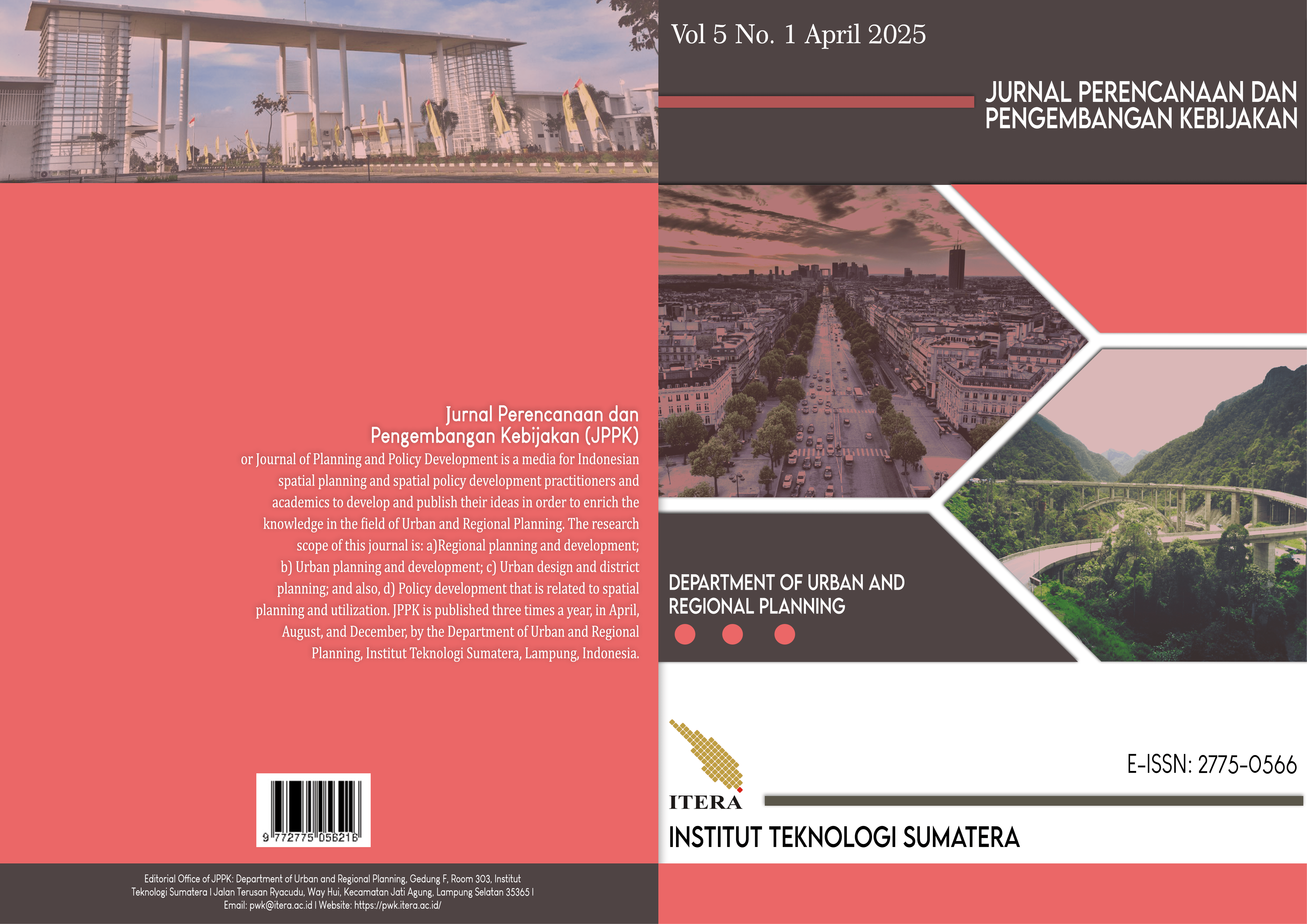Fenomena Studentifikasi di Surakarta (Studi Kasus: Kecamatan Jebres)
Abstract
The phenomenon of studentification has been identified as a transformative force influencing the spatial, social, and economic dynamics of the area. This study aims to investigate the phenomenon of studentification in Kecamatan Jebres, Surakarta, by examining the availability and distribution of supporting facilities that serve student activities, particularly in the sectors of commerce, healthcare, and communal spaces. Using a deductive approach and a descriptive quantitative method, this research employs empirical data to validate the existence of studentification in Kecamatan Jebres, Surakarta. The findings highlight the availability of facilities across various sectors. In the trade and service sectors, there is a wide range of services, including photocopy centers, laundries, eateries, workshops, car and motorcycle wash facilities, small food stalls (warungs), and shops, all of which meet students' daily necessities. The healthcare sector is supported by facilities such as pharmacies, clinics, hospitals, and community health centers (puskesmas) that address the health needs of the community, including students. Additionally, communal spaces, such as communal rooms, libraries, museums, and sports facilities, provide venues for both academic and social activities, reflecting the diverse requirements of students in the area. This study confirms the existence of studentification in Kecamatan Jebres through the concentration and number of facilities that support student life. These findings reinforce the significant impact of the student population on the provision of facilities in the area, highlighting the region's adaptation to the needs of its student population.
Downloads
References
[2] Glasson, J. (2003). The Widening Local and Regional Development Impacts of the Modern Universities - A Tale of Two Cities (and North-South Perspectives). In Local Economy (Vol. 18, Issue 1, pp. 21–37). https://doi.org/10.1080/0269094032000073799
[3] Gu, H., & Smith, D. P. (2020). ‘Living off the campus’: urban geographies of change and studentification in Beijing, China. Urban Geography, 41(2), 205–224. https://doi.org/10.1080/02723638.2019.1659071
[4] Hubbard, P. (2009). Geographies of studentification and purpose-built student accommodation: Leading separate lives? Environment and Planning A, 41(8), 1903–1923. https://doi.org/10.1068/a4149
[5] Jaya, I. M. L. M. (2020). Metode penelitian kuantitatif dan kualitatif: Teori, penerapan, dan riset nyata. Anak Hebat Indonesia.
[6] Nazir, Moh. Ph. D. (2009). Metode Penelitian. Jakarta: Ghalia Indonesia.
[7] Satria, W. D. (2022). Analisa Kepuasan dan Prioritas Kebutuhan Fasilitas Hunian Sewa Mahasiswa. Jurnal Manajemen Aset Infrastruktur & Fasilitas, 6(1). https://doi.org/10.12962/j26151847.v6i1.20225
[8] Setiyaningrum, L., Pawelas Arso, S., & Yunila Fatmasari, E. (2017). ANALISIS KEBUTUHAN (NEED) MAHASISWA TERHADAP PELAYANAN KESEHATAN KAMPUS UNIVERSITAS DIPONEGORO. JURNAL KESEHATAN MASYARAKAT, 5, 2356–3346. http://ejournal3.undip.ac.id/index.php/jkm
[9] Smith, D. (2008). The politics of studentification and “(un)balanced” urban populations: Lessons for gentrification and sustainable communities? Urban Studies, 45(12), 2541–2564. https://doi.org/10.1177/0042098008097108
[10] Sulistiawan, U. H., & Dewi, S. P. (2014). PENGARUH KAWASAN PENDIDIKAN TINGGI UNDIP TERHADAP PERKEMBANGAN AKTIVITAS PERDAGANGAN DAN JASA DI KORIDOR JALAN BANJARSARI SELATAN-MULAWARMAN RAYA KECAMATAN TEMBALANG. Ruang, 2(1).
[11] Susanto, V., Amir, M. A. M., Haqqi, M. A., Ekomadyo, A. S., & Riska, A. S. (2020). PENGARUH GAYA HIDUP MILENIAL TERHADAP DESAIN ARSITEKTUR KAFE. Vitruvian, 9(2), 69. https://doi.org/10.22441/vitruvian.2020.v9i2.001
[12] Tracy, S. J. (2013). Qualitative Research Methods. Wiley-Black Well, West Sussex.
[13] Widjajanti, R. (2012). Karakteristik Aktivitas Pedagang Kaki Lima di Ruang Kota (Studi Kasus: Kawasan Pendidikan Tembalang, Kota Semarang). Jurnal Pembangunan Wilayah Dan Kota, 2(1).












